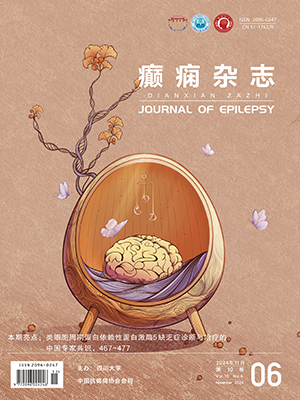With the development of artificial intelligence (AI) technology, great progress has been made in the application of AI in the medical field. While foreign journals have published a large number of papers on the application of AI in epilepsy, there is a dearth of studies within domestic journals. In order to understand the global research progress and development trend of AI applications in epilepsy, a total of 895 papers on AI applications in epilepsy included in the Web of Science Core Collection and published before December 31, 2022 were selected as the research objects. The annual number of papers and their cited times, the most published authors, institutions and countries, and their cooperative relationships were analyzed, and the research hotspots and future trends in this field were explored by using bibliometrics and other methods. The results showed that before 2016, the annual number of papers on the application of AI in epilepsy increased slowly, and after 2017, the number of publications increased rapidly. The United States had the largest number of papers (n=273), followed by China (n=195). The institution with the largest number of papers was the University of London (n=36), and Capital Medical University in China had 23 papers. The author with the most published papers was Gregory Worrell (n=14), and the scholar with the most published articles in China was Guo Jiayan from Xiamen University (n=7). The application of machine learning in the diagnosis and treatment of epilepsy is an early research focus in this field, while the seizure prediction model based on EEG feature extraction, deep learning especially convolutional neural network application in epilepsy diagnosis, and cloud computing application in epilepsy healthcare, are the current research priorities in this field. AI-based EEG feature extraction, the application of deep learning in the diagnosis and treatment of epilepsy, and the Internet of things to solve epilepsy health-related problems are the research aims of this field in the future.
Citation: WANG Guangxin, CHEN Zhiqiang, YANG Jingwei. Global research progress and trends of artificial intelligence applications in epilepsy. Journal of Epilepsy, 2023, 9(6): 487-491. doi: 10.7507/2096-0247.202309004 Copy
Copyright © the editorial department of Journal of Epilepsy of West China Medical Publisher. All rights reserved




